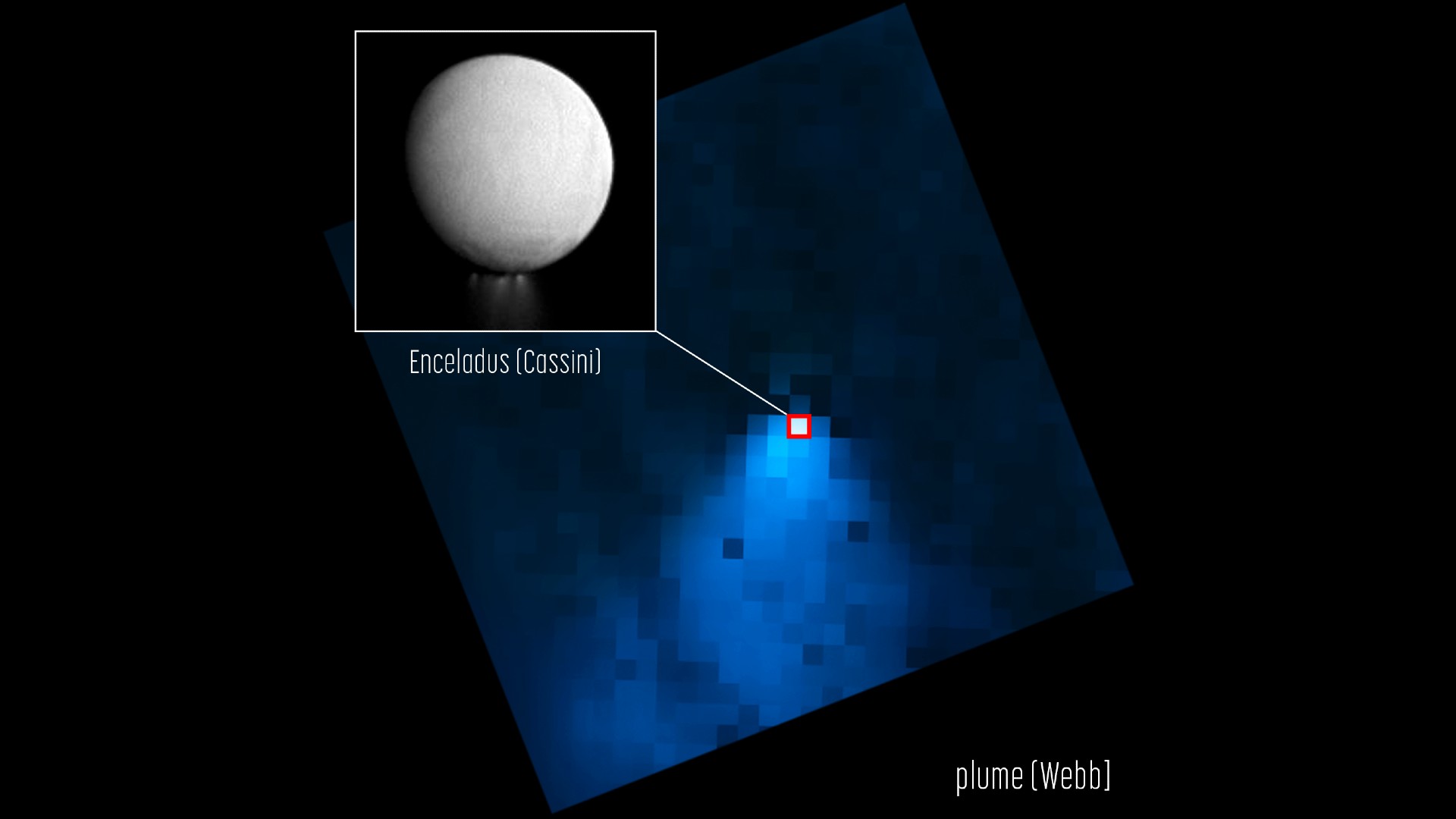Saturn's moon Enceladus is blasting a plume of water 6,000 miles high. Could life be lurking under its icy shell?
At 6,000 miles high, the plume is 20 times as wide as the tiny ice-covered moon.

The James Webb Space Telescope has found a 6,000 mile-long plume of water squirting into space from Saturn's tiny, ice-covered moon Enceladus, creating a massive watery cloud in the ringed planet's orbit.
Saturn's moon Enceladus is one of the likeliest places in the solar system that might harbor extraterrestrial life. The new James Webb Space Telescope (JWST) observation suggests that the grand telescope may play a role in helping scientists to decide whether and how best to look for it.
NASA-led Cassini mission detected water plumes on Enceladus in 2005 during a series of close flybys. But at that time, scientists gained only a limited understanding of how powerful these geysers actually are. Now, JWST has allowed scientists to take another look at these watery jets and examine their composition. "With the James Webb telescope, we can measure water from far away and see the whole view for the first time," Geronimo Villanueva of NASA's Goddard Space Flight Center and lead author of the study, told Space.com.
Related: Enceladus: Everything you need to know about Saturn's bright, icy moon
The Webb measurements revealed that the water torrent gushes out of the barely 300-mile-wide (500 kilometers) Enceladus at a speed of 79 gallons (360 liters) per second, NASA said in a statement, fast enough to fill an Olympic-sized swimming pool with water in a couple of hours.
Although scientists expected to detect water on Enceladus, the result of Webb's first observation of the moon came completely by surprise.
"When we planned this, we thought we were going to see a little bit of water very close to the surface," Villanueva said. "We have never expected this type of emission of water."
Breaking space news, the latest updates on rocket launches, skywatching events and more!
The measurements revealed that despite its minuscule size, Enceladus has a huge effect on the environment around the gas giant, which it orbits in less than two days. The geyser of water creates a huge watery cloud in the moon's wake that sits in Saturn's orbit and spreads towards the planet's other moons. Data analysis revealed that only 30% of the water that forms the donut-shaped water cloud remains in place. The rest, about 70%, spreads over the rest of the Saturnian system and beyond, according to NASA.
Scientists are now curious what else might be spreading throughout the solar system with this powerful spray. Analysis of Cassini data previously found molecules in the Enceladus plume that might be signatures of life, like methane, carbon, oxygen and phosphorus. Scientists believe the little moon has all the necessary prerequisites for simple forms of life to emerge, as its liquid ocean is sandwiched between a thick shell of ice and a rocky core that provides a source of nutrients.
The moon's close proximity to Saturn also means the core is subject to enormous gravitational forces that likely generate heat inside the moon and with it, possibly, the chemical reactions that might help microorganisms to emerge.
Villanueva, however, said that Webb didn't find traces of these molecules during its first look at the intriguing water world.
"We didn't see them in these measurements, but we are hoping that if things are there, we will be able to detect them in the future," Villanueva said.

Tereza is a London-based science and technology journalist, aspiring fiction writer and amateur gymnast. Originally from Prague, the Czech Republic, she spent the first seven years of her career working as a reporter, script-writer and presenter for various TV programmes of the Czech Public Service Television. She later took a career break to pursue further education and added a Master's in Science from the International Space University, France, to her Bachelor's in Journalism and Master's in Cultural Anthropology from Prague's Charles University. She worked as a reporter at the Engineering and Technology magazine, freelanced for a range of publications including Live Science, Space.com, Professional Engineering, Via Satellite and Space News and served as a maternity cover science editor at the European Space Agency.

